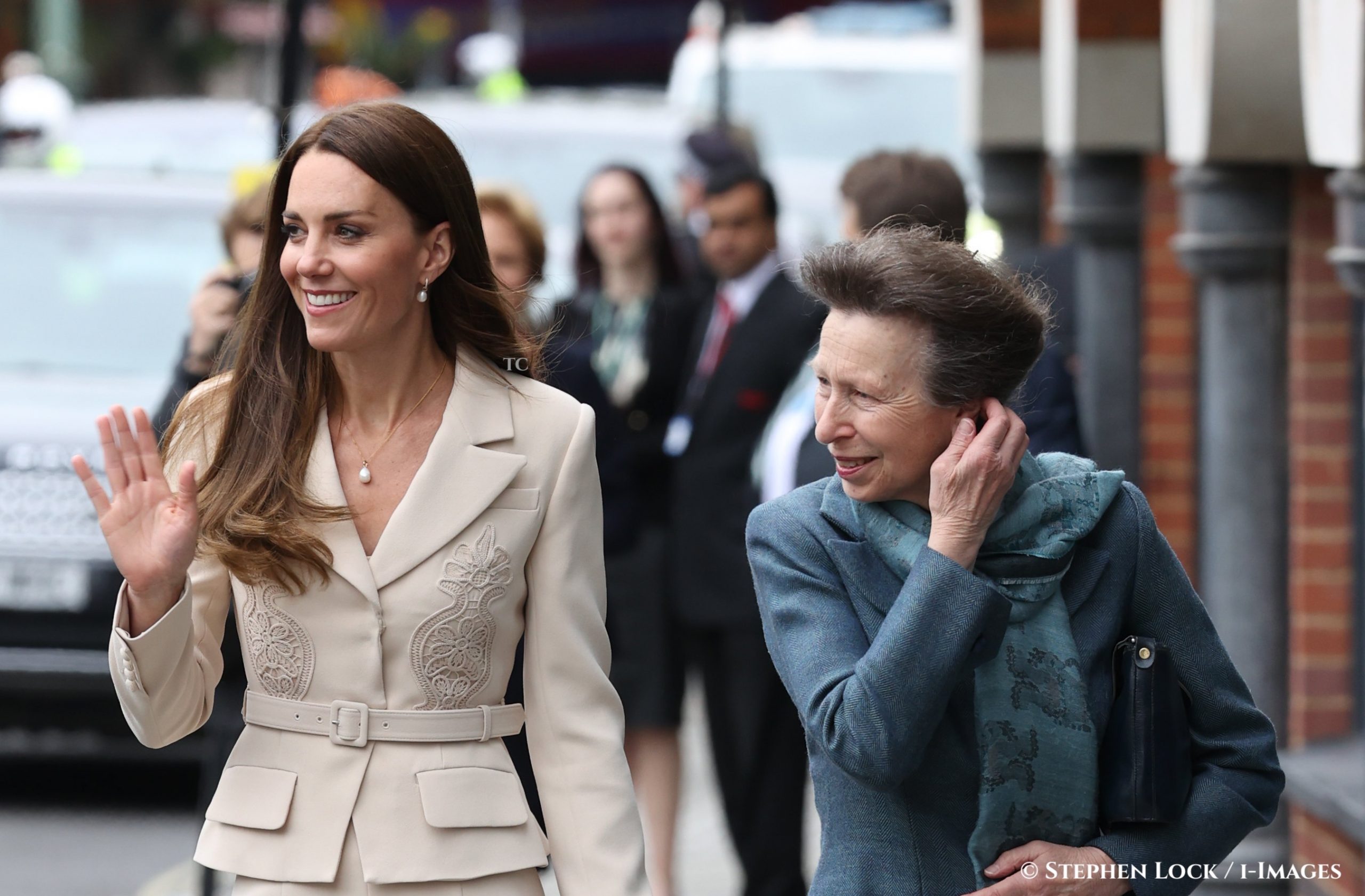The Duchess of Cambridge and The Princess Royal carried out their first joint engagement today with a visit to the new global hub for maternity care and related female health issues.
The royal pair visited the headquarters of their patronages, the Royal College of Obstetricians and Gynaecologists (RCOG) and the Royal College of Midwives (RCM). The Duchess of Cambridge became the patron of the RCOG in 2018, whilst The Princess Royal has been patron of the RCM for 20 years. Their roles were previously held by The Queen Mother.

Catherine and Anne were greeted by RCM Chief Executive Gill Walton and RCOG President Dr Edward Morris. The visit comes as the royal pair officially open the new hub which has been designed by the RCOG to foster collaborations across the sector.
During the engagement, the royal duo watched a mock emergency caesarean operation by Dr Katie Cornthwaite, performed using a dummy.

In a roundtable meeting, the two royals took part in a discussion with experts and new mothers about the measures being taken to tackle inequalities in maternity care. They were shown some of the incredible work being done to improve essential gynecological skills, both locally and worldwide.
Gill Walton, CEO of the Royal College of Midwives said of the royal duo: ‘The Duchess of Cambridge has a lot of interest in mental health and early years and we’ve been doing collaborative projects around that. The Princess Royal is really knowledgable about all aspects of midwifery and maternity care.’


The Duchess and Princess Anne met with representatives from Tommy’s National Centre for Maternity Improvement, and had the opportunity to learn about digital tools which are being developed to identify and support those with a higher risk pregnancy.
The royal pair also met partners of the Avoiding Brain Injury in Childbirth collaboration to discuss the development of a national approach to monitoring and safety of fetal wellbeing during labour.

Princess Anne reportedly left midwives in a fit of laughter as she recalled fearing that one of her babies had become ‘wedged’ during an accident whilst heavily pregnant. She made the remarks as she and Catherine viewed a demonstration of a new Intrapartum Fetal Surveillance tool, which monitors the safety of babies during labour and alerts medical staff of the need to move to an emergency delivery if the baby’s head gets stuck in the mother’s pelvis.
The pair ended their visit by unveiling a plaque to mark the official opening of the hub, as well as being presented with flowers from pupils from a nearby school.









